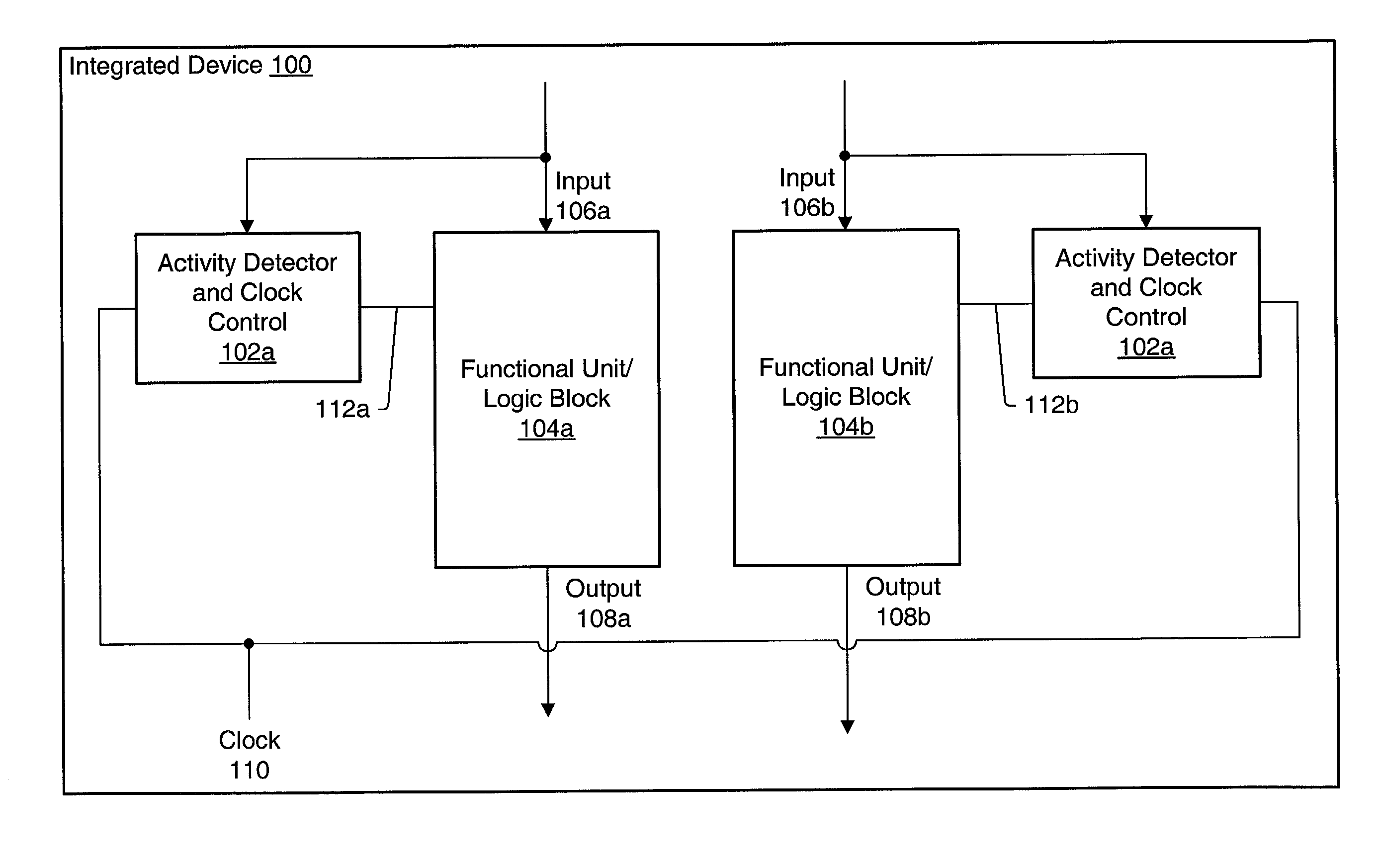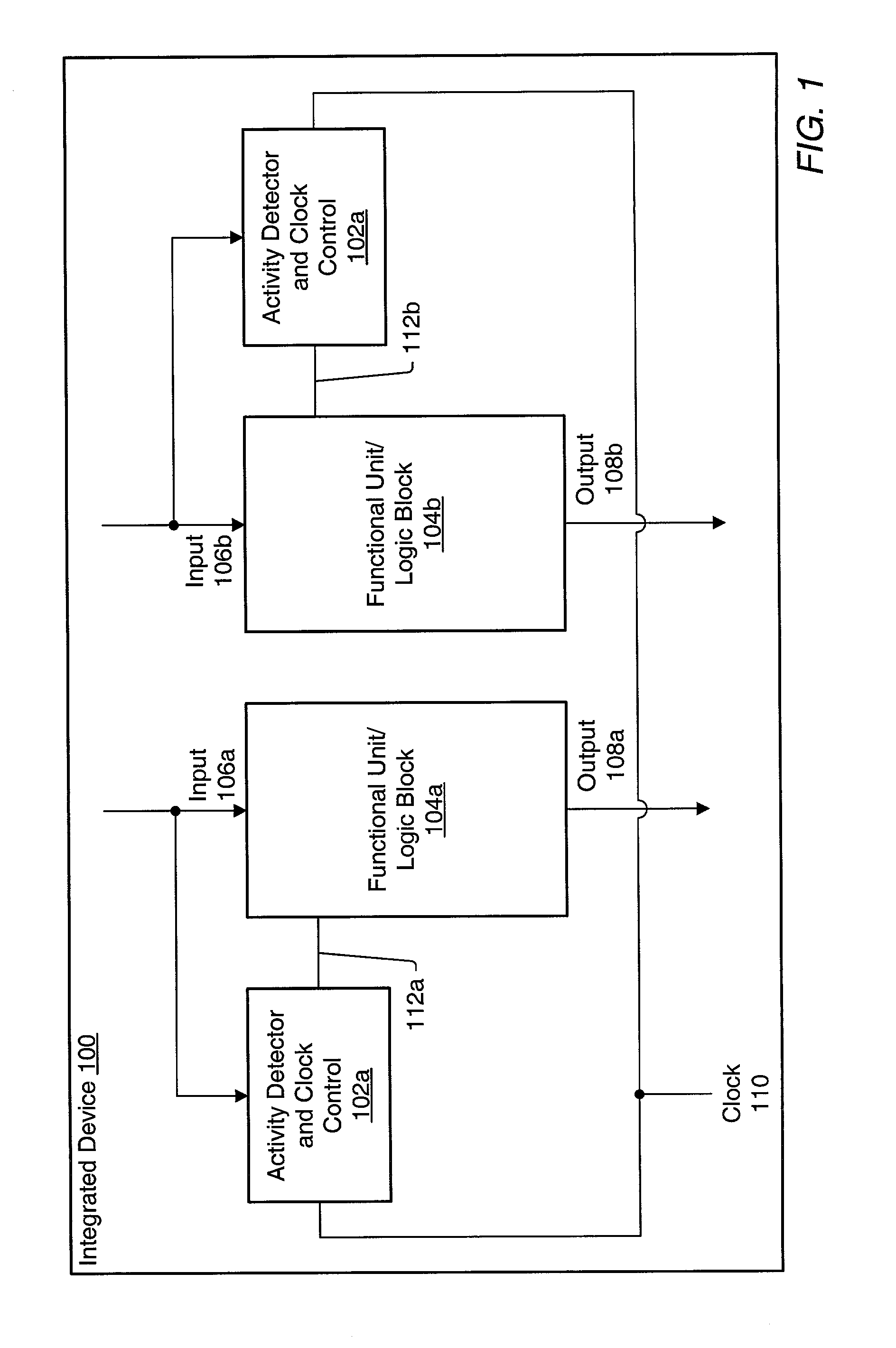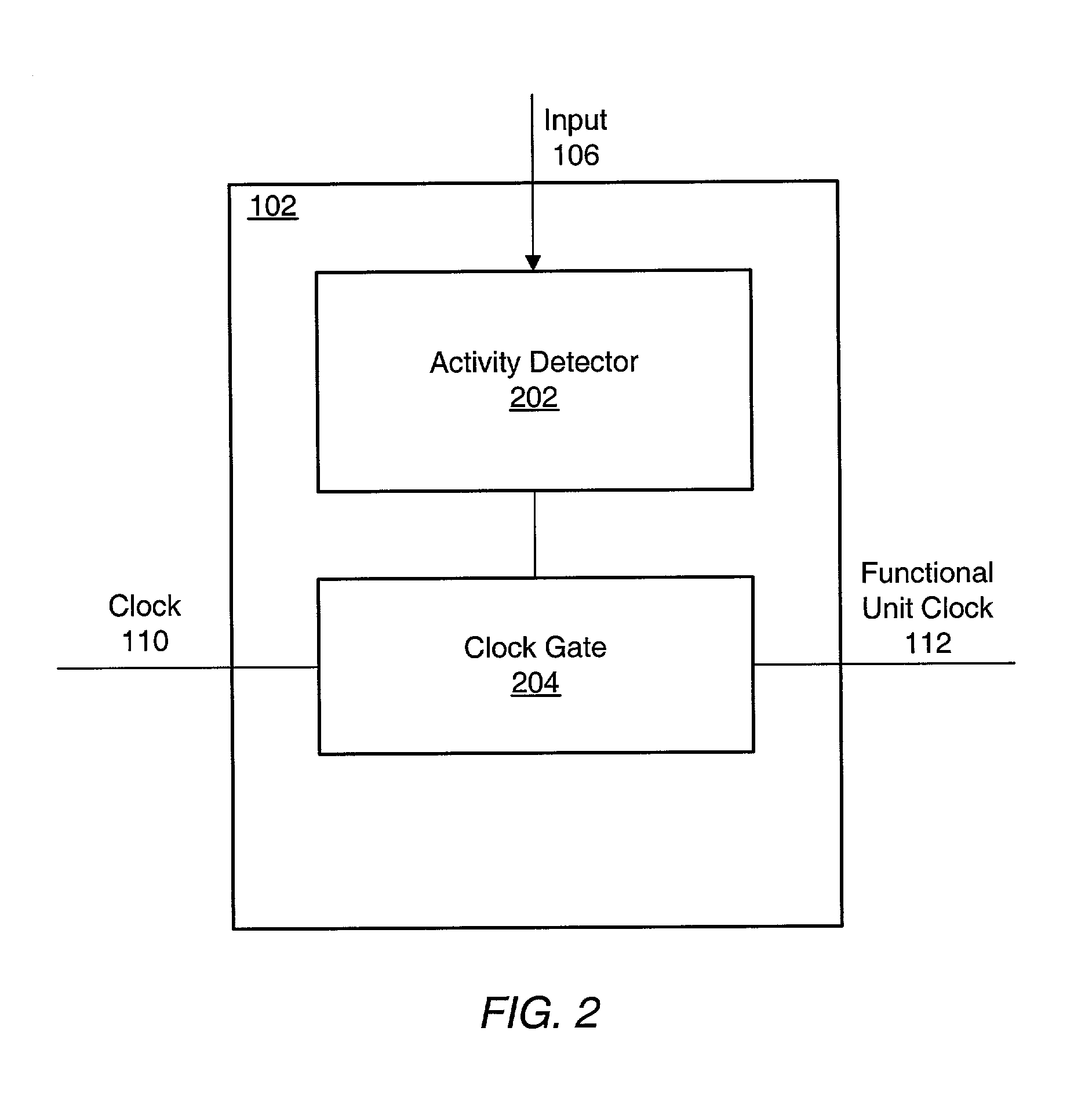Clock control of functional units in an integrated circuit based on monitoring unit signals to predict inactivity
a technology of functional units and integrated circuits, applied in instruments, climate sustainability, sustainable buildings, etc., can solve the problems of power and thermal constraints placed on modern semiconductor devices, over-all power consumption within an integrated circuit, and the limiting factor of the performance and functionality of a single device, the more power it typically consumes, and the more power it is typically consumed
- Summary
- Abstract
- Description
- Claims
- Application Information
AI Technical Summary
Benefits of technology
Problems solved by technology
Method used
Image
Examples
Embodiment Construction
[0033]FIG. 1 illustrates a semiconductor device or integrated circuit 100 having separate clock control for a number of different functional units or logic blocks 104, according to one embodiment. The device 100 includes a number of different functional units or logic blocks 104. Each functional unit 104 receives one or more input signals 106 and produces one or more outputs 108. A functional unit may be a section of circuitry or other logic structure within the integrated circuit 100 that perform a particular function or task. Each function unit 104 represents a portion of the integrated circuit 100 that is not always active. For example, while functional unit 104a is operating on input 106a to produce output 108a, functional unit 104b may be inactive, and vice versa. In some instances function unit 104a and 104b may both be inactive or both be active. Note that while FIG. 1 only illustrates two functional units 104a and 104b, integrated circuit device 100 may have more than two fu...
PUM
 Login to View More
Login to View More Abstract
Description
Claims
Application Information
 Login to View More
Login to View More - R&D
- Intellectual Property
- Life Sciences
- Materials
- Tech Scout
- Unparalleled Data Quality
- Higher Quality Content
- 60% Fewer Hallucinations
Browse by: Latest US Patents, China's latest patents, Technical Efficacy Thesaurus, Application Domain, Technology Topic, Popular Technical Reports.
© 2025 PatSnap. All rights reserved.Legal|Privacy policy|Modern Slavery Act Transparency Statement|Sitemap|About US| Contact US: help@patsnap.com



